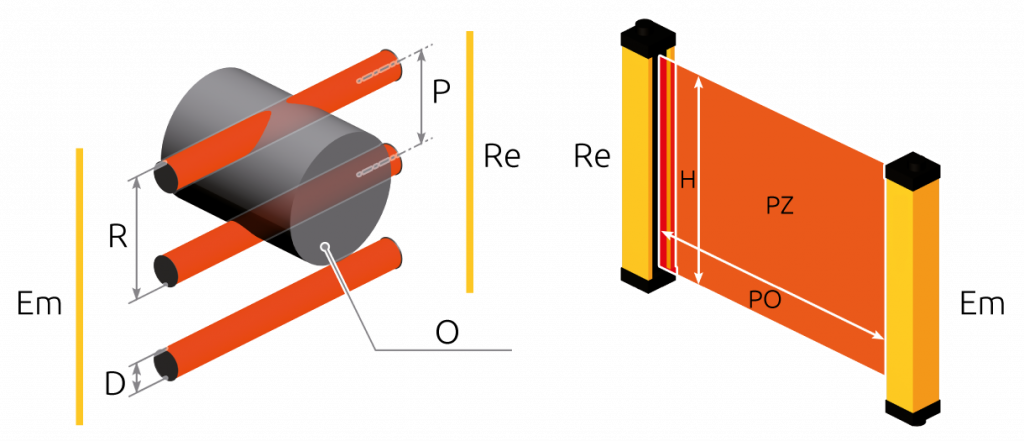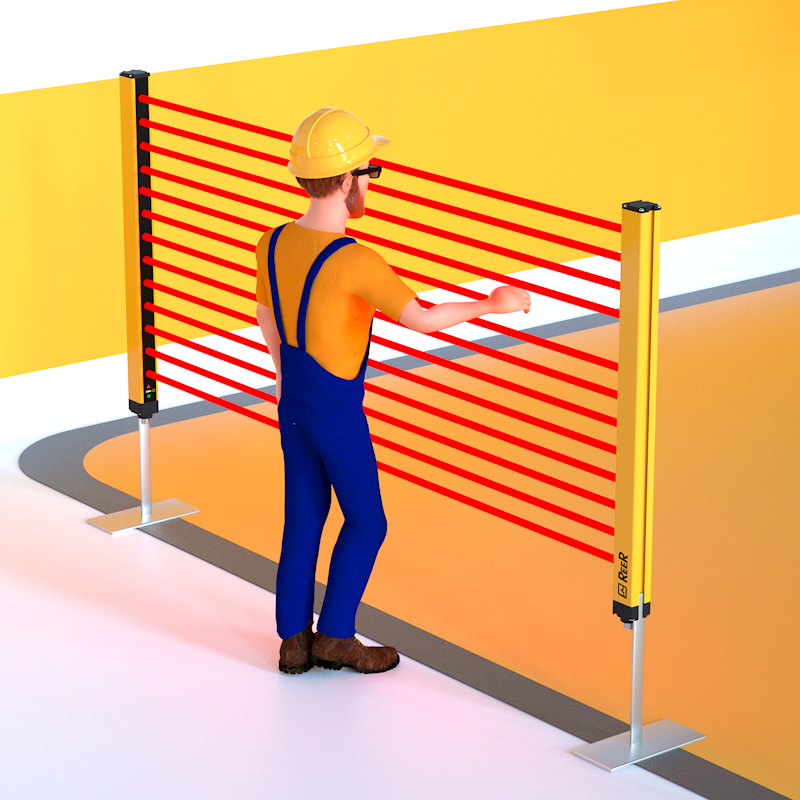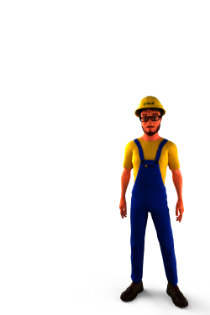Photoelectric safety light curtains
Characteristic elements
Light curtains are protective electro sensitive devices (ESPE) using one or more light beams, emitted by an Emitter and received by a Receiver, to create an intangible controlled area.
When the chosen safety device is a photo-electric barrier (AOPD Active Optoelectronic Protective Device), it shall necessary belong to TYPE 2 or TYPE 4 as established by the International Standard IEC 61496 1-2.
Why “Type” and not “category”?
The two “Types” differ in their safety related performance and are related to the categories of ISO 13849-1 but do not have the same meaning as here, to define the degree of safety integrity, further parameters in addition to the the architecture of the system and to the types of hardware and software failures are taken into account that are related to the detection technology used (substantially optical); they mainly concern immunity to light interference and the design characteristics of the Optical systems.
Safety parameters for Type 2 light curtains
With the publication of Edition 3 of the harmonized EN 61496-1 standard it is no longer possible to use a Type 2 safety light curtains for safety functions assessed as SIL 2 / PL d. If a safety level of SIL 2 / PL d (or higher) is required and it is nevertheless intended to use a safety light curtain, then it will be necessary to use a Type 4 safety light curtain.
This regulatory requirement derives from the fact that the reduction of risk that can be obtained via a photoelectric safety light curtain is not only a function of the safety level of its electronic parts, but is also determined by its systematic capabilities (for example: environmental influences, EMC, optical performance and detection principle).
The systematic capability of a Type 2 photoelectric light curtain may in fact not be sufficient to ensure adequate risk reduction for SIL 2 / PL d applications.The standard also establishes that the labelling of Type 2 safety light curtains must indicate such limitation to SIL 1 / PL c.
The PFHD values declared for the electronic control part of the device, on the other hand, are not limited and therefore it is possible to use the PFHD value provided by the manufacturer of the device in the global assessment of the safety function, even if it exceeds the SIL 1 / PL c range.
Protected height
This is the height controlled by the light curtain. If it is positioned horizontally, this value shows the depth of the protected zone.
Range
This is the maximum working distance that may exist between the emitter and the receiver. When deflection mirrors are used, it is necessary to take into account the attenuation factor introduced by each of them, which it is about 15%.
Response time
This is the time it takes for the light curtain to transmit the alarm signal from the time the protected zone is interrupted.
Resolution
The resolution, for all ReeR safety light curtains, is the minimum size of an object that, placed into the controlled area, will obscure the controlled zone and hence stop the hazardous movement of the machine.
- Single beam light barriers: their resolution R is the same as the diameter of the lens. (R = D)
- Multibeam light curtains: their resolution R is the same as the sum of the lens diameter + the distance between two adjacent lenses.
Resolution (R = P + D).

P: Pitch
D: Lens diameter
R: Resolution = P+D
H: Protected height
PO: Range
PZ: Protected zone
Re: Receiver
Em: Emitter
O: Opaque object
Advantages of light curtains
- Effective protection in the event of fatigue or distraction of the operator
- Increase in the productive capacity of the machine as the light curtain does not require the manual handling of physical guards or waiting for them to open
- Faster machine loading/unloading operations
- Reduced times of approach to the working areas
- Elimination of the risk of tampering since any irregular intervention on the light curtain stops the machine
- Simple and quick installation, with greater flexibility of adjustment on the machine, even in the case of subsequent repositioning
- Possibility to build up large sized protections, either linear or along a perimeter, on several sides, at greatly reduced costs
- Facilitated and fast maintenance of the machine, as there is no need to remove physical guards, such as grids, gates, etc.
- Improved appearance and ergonomic effectiveness of the machine




